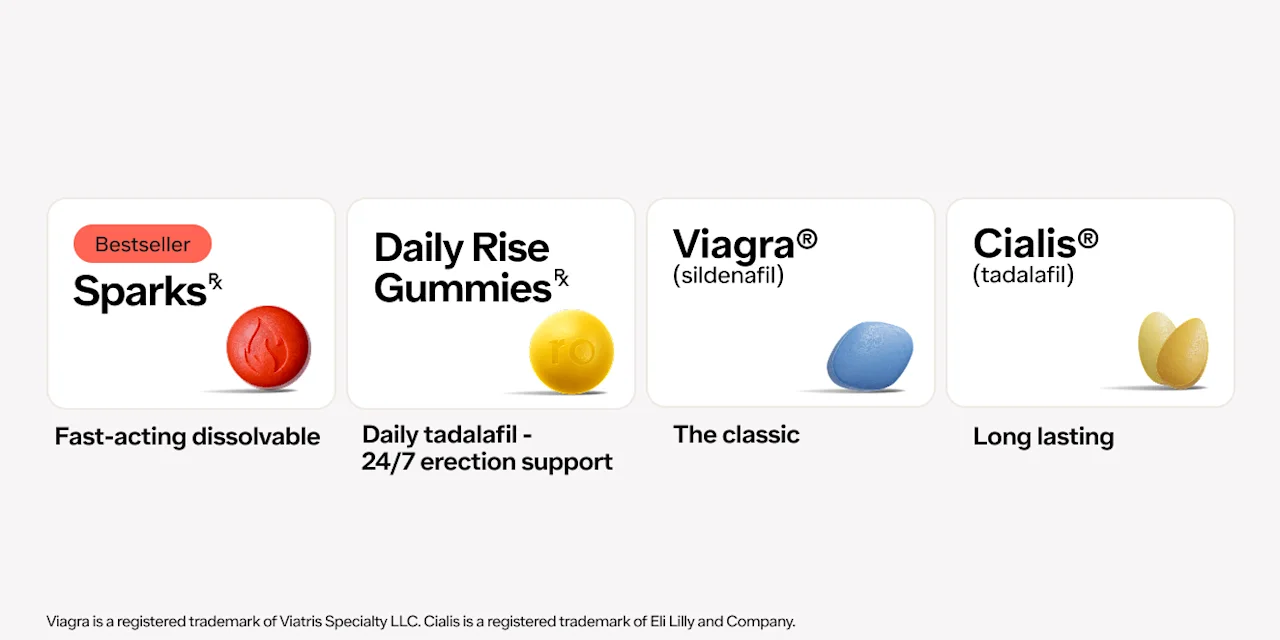Here's what we'll cover
Here's what we'll cover
The word aphrodisiac, usually used to describe substances that increase sexual desire, is derived from the name of the Greek goddess of love, Aphrodite. Man has been hunting for an effective one since at least the time of the ancient Greeks. Along the way, there have been many contenders, from some of which still have a reputation (chocolate and raw oysters) to those long-forgotten (Bufo toad) (West, 2015). If it weren’t for a controversial mention in an old Bill Cosby special, “Spanish fly” may well have been one that fell into obscurity.
But if the reputation of the man that mentioned it isn’t enough for you to steer clear, we’ve got plenty more reasons. Read on.
What is Spanish fly, and does it work?
If you ever come across a product that claims to contain Spanish fly, don’t. Just don’t. Most of the products with that name available for purchase are just trying to borrow a little reputation from the once-famous insect and contain none of the actual bug or its active substance, cantharidin.
But in the off chance that it does contain some of the bug, it can be toxic, dangerous, and even deadly.
Spanish flies aren’t actually flies. They’re a type of blister beetle, a small, iridescent creature that will cause your skin to bubble and peel, hence the name. Long ago, when medicine and quackery overlapped, this substance was used for everything from epiglottitis (a sort of throat condition) to murdering your enemies. And while taking it by mouth or applying it to your genitals may get you hot and bothered, that’s because it’s damaging your body, not cause it’s getting you in the mood for sex.
These insects have been used in traditional Chinese medicine for over 2,000 years (Wang, 1989). Cantharidin’s reputation for being an aphrodisiac likely stems from reports that, among other horrifying side effects, it can cause priapism, a painful, persistent, and dangerous erection that won’t go away (Till, 1981).
But cantharidin is extremely poisonous and can cause injury or death when ingested. There are reports of cantharidin poisoning and death at varying amounts, leading researchers to believe that even small quantities can kill you (Nickolls, 1954). Reports of victims of cantharidin poisoning aren’t ancient history, either. In 2013, a 23-year-old wound up hospitalized after eating one of these beetles as part of a bet (Cotovio, 2013).
There are still products that claim to contain Spanish fly on the market today, but most of them likely do not. Cantharidin, though, is sometimes used off-label by dermatologists as a treatment for a fungal skin condition called molluscum because it literally peels your skin off.
So bottom line? No matter how adventurous you are, you should never ingest Spanish fly or anything that claims to contain Spanish fly or cantharidin. Reported side effects of ingesting cantharidin include miscarriage, priapism, convulsions, bleeding (including vaginal and rectal bleeding), vomiting blood, kidney damage, seizures, heart problems, blood in the urine, and a very dangerous condition called disseminated intravascular coagulation (DIC), where blood clots start to form throughout your body (Till, 1981; Karras, 1996).
What about other aphrodisiacs?
We tend to think of aphrodisiacs as substances that increase sexual desire, but the term isn’t particularly well defined. Some people believe that these substances (which range from chocolate to raw oysters to illicit and exotic plants and animal products) can increase a person’s potency, libido, or sexual pleasure.
And although a long list of substances that come from plants and animals have been considered and used as aphrodisiacs in traditional medicine, there is little or no science to back these claims up (Kotta, 2013). But that hasn’t stopped scientists from keeping the search going. Some of the purported aphrodisiac herbs we know the most about are:
Maca
Maca root is from the highlands of Peru and may increase sex drive in men. In one study, men between the ages of 21 and 56 reported increased sexual desire after eight weeks of maca supplementation, though the root had no effect on their testosterone levels (Gonzales, 2002).
There’s also some evidence that maca may help improve libido in women using antidepressants (a therapy known to reduce sexual desire). A larger study, though, which analyzed past research found there wasn’t enough evidence to make any certain claims about how this root may affect sexual functioning (Dording, 2015; Shin, 2010).
Tribulus terrestris
This plant, which is also called Bindii, may help erectile function and libido (sex drive), but only at certain doses. One study didn’t see any positive effect from 800 mg Tribulus terrestris, but another noted significant improvement in erectile function, sex drive, and satisfaction with sex in patients given a total of 1500 mg a day (Santos, 2014; Kamenov, 2017).
Horny goat weed
This plant, which is found mostly in China and the Middle East and is also known as barrenwort and ying yang huo in Chinese, has been used in traditional Chinese medicine for centuries. While the claims are pretty substantial, there’s little evidence that it works for anything at all. Horny goat weed does contain a compound called icariin, which seems to have the same chemical effect (at least in the lab) as prescription medications like Viagra, Levitra, and Cialis, which certainly got researchers excited, but it has yet to be proven effective outside of the lab as a treatment for ED (Dell-Agli, 2008).
Ginkgo biloba
Ginkgo biloba is one herbal supplement that has piqued people’s interest for its ability to relax smooth muscle tissue and increase blood flow. Since these factors are crucial in a person’s ability to get and maintain an erection, it’s definitely an area of interest. But alas, human studies are lacking. One small study found that oral supplementation with ginkgo extract may help restore spontaneous erections in some men whose ED was confirmed to be caused by obstructed blood flow (Sohn, 2015).
Damiana
Damiana, a small flowery plant native to the southern United States, may help increase sex drive in some women. Researchers found that the herbal supplement improved the frequency of sexual intercourse in pre- and perimenopausal women and significantly improved sexual desire in postmenopausal women (Ito, 2006). In men, damiana acts similarly to sildenafil (Viagra) to boost blood flow—but so far, most studies have shown sexual improvement in rats, not humans (Estrada-Reyes, 2013).
One study showed significant improvement in erections in men after 12 weeks of taking an herbal supplement that contained damiana in addition to a range of other herbs with purported aphrodisiac properties. While the treatment was more effective than placebo at improving sexual dysfunction, it would be impossible to attribute the results to damiana specifically (Shah, 2012).
Red ginseng or Korean ginseng
Ginseng may help those with erectile dysfunction. This dietary supplement “significantly improved erectile function” compared to placebo, according to researchers behind a 2018 meta-analysis that considered 24 controlled trials involving 2,080 men with ED.
They concluded that the herb may be an effective erectile dysfunction treatment but also called for further research with larger sample populations. The researchers also noted that the trials they looked at were formatted differently—some looked at the effects of just one herb while others used combination therapies—so more large-scale research would be the next step to verifying their findings (Borrelli, 2018).
Yohimbe/yohimbine
Yohimbe is the common name for a species of tree found in central Africa from which the active chemical, known as yohimbine, is derived. Used in West African traditional medicine as an aphrodisiac, it is a popular ingredient in various supplements promising to improve male virility. And while human studies on yohimbine for ED in humans are hopeful, research is limited. One small study found that it helped some men with mild erectile dysfunction successfully achieve and maintain an erection long enough to have penetrative sex (Guay, 2002).
Prescription options for improving sexual function
The first-line treatment for erectile dysfunction is a class of medications that includes drugs like Viagra (Park, 2013). Viagra (generic name sildenafil), Cialis (generic name tadalafil), Levitra (generic name vardenafil), and the generic versions of these medications are examples of PDE5 inhibitors. Available only by prescription in the US, these drugs improve blood flow to the penis in order to improve erections in patients with ED (Dhaliwal, 2020).
PDE5 inhibitors are not the only option to treat ED, though. Devices such as the vacuum constriction device (VCD), penile injection or intraurethral suppositories, and penile prosthesis are all also current therapies for people with ED (Stein, 2014). If your healthcare provider finds that your ED is caused by low testosterone levels, they can also prescribe testosterone replacement therapy (TRT).
In many cases, ED may be caused by an underlying condition. Men who have sedentary or less active lifestyles are more likely to experience ED than their active counterparts (Janiszewski, 2009). Conditions that affect blood flow or cause poor circulation may also cause ED, such as heart disease (Yafi, 2016). Other conditions, such as diabetes and Parkinson's disease, may also cause erectile problems (Burnett, 2018; Bronner, 2011).
Depression, low-self esteem, and stress have all been shown to contribute to the development and persistence of ED, as well (Davies, 2012). Properly diagnosing any underlying conditions and receiving optimal treatment can be the first step towards improving ED (Rosen, 2001). When in doubt, avoid treatments that are not recommended by a healthcare provider since in the best case scenario, they won’t work, and in the worst case scenario, they can hurt you.
DISCLAIMER
If you have any medical questions or concerns, please talk to your healthcare provider. The articles on Health Guide are underpinned by peer-reviewed research and information drawn from medical societies and governmental agencies. However, they are not a substitute for professional medical advice, diagnosis, or treatment.
Viagra Important Safety Information: Read more about serious warnings and safety info.
Cialis Important Safety Information: Read more about serious warnings and safety info.
Borrelli, F., Colalto, C., Delfino, D. V., Iriti, M., & Izzo, A. A. (2018). Herbal Dietary Supplements for Erectile Dysfunction: A Systematic Review and Meta-Analysis. Drugs, 78 (6), 643-673. doi:10.1007/s40265-018-0897-3. Retrieved from https://link.springer.com/article/10.1007%2Fs40265-018-0897-3
Bronner, G., & Vodušek, D. B. (2011). Management of sexual dysfunction in Parkinson's disease. Therapeutic Advances In Neurological Disorders, 4 (6), 375–383. doi:10.1177/1756285611411504. Retrieved from https://www.ncbi.nlm.nih.gov/pmc/articles/PMC3229252/
Burnett, A. L., Nehra, A., Breau, R. H., Culkin, D. J., Faraday, M. M., Hakim, L. S., et al. (2018). Erectile Dysfunction: AUA Guideline. Journal of Urology, 200 (3), 633-641. doi:10.1016/j.juro.2018.05.004. Retrieved from https://www.auanet.org/guidelines/erectile-dysfunction-(ed)-guideline
Cotovio, P., Silva, C., Marques, M. G., Ferrer, F., Costa, F., Carreira, A., et al. (2013). Acute kidney injury by cantharidin poisoning following a silly bet on an ugly beetle. Clinical Kidney Journal, 6 (2), 201-203. doi:10.1093/ckj/sft001. Retrieved from https://www.ncbi.nlm.nih.gov/pmc/articles/PMC4432444/
Dell’Agli, M., Galli, G. V., Cero, E. D., Belluti, F., Matera, R., Zironi, E., .et al. (2008). Potent Inhibition of Human Phosphodiesterase-5 by Icariin Derivatives. Journal of Natural Products, 71 (9), 1513-1517. doi:10.1021/np800049y. Retrieved from https://pubs.acs.org/doi/10.1021/np800049y
Davies, K. P. (2012). Erectile Dysfunction. Muscle: Fundamental Biology and Mechanisms of Disease, 2 , 1339-1346. doi:10.1016/b978-0-12-381510-1.00102-2. Retrieved from https://www.sciencedirect.com/science/article/pii/B9780123815101001022
Del Rosso, J. Q. & Kircik, L. (2019). Topical Cantharidin in the Management of Molluscum Contagiosum: Preliminary Assessment of an Ether-free, Pharmaceutical-grade Formulation. The Journal of Clinical and Aesthetic Dermatology , 12 (2), 27–30. Retrieved from https://www.ncbi.nlm.nih.gov/pmc/articles/PMC6415708/
Dhaliwal, A. & Gupta, M. (2020). PDE5 Inhibitor . Treasure Island, FL: StatPearls Publishing. Retrieved from https://www.ncbi.nlm.nih.gov/books/NBK549843/
Dording, C. M., Schettler, P. J., Dalton, E. D., Parkin, S. R., Walker, R. S., Fehling, K. B., et al. (2015). A Double-Blind Placebo-Controlled Trial of Maca Root as Treatment for Antidepressant-Induced Sexual Dysfunction in Women. Evidence-Based Complementary and Alternative Medicine, 2015 , 1-9. doi:10.1155/2015/949036. Retrieved from https://www.hindawi.com/journals/ecam/2015/949036/
Estrada-Reyes, R., Carro-Juárez, M., & Martínez-Mota, L. (2013). Pro-sexual effects of Turnera diffusa Wild (Turneraceae) in male rats involves the nitric oxide pathway. Journal of Ethnopharmacology, 146 (1), 164-172. doi:10.1016/j.jep.2012.12.025. Retrived from https://pubmed.ncbi.nlm.nih.gov/23298455/
Gonzales, G. F., Cordova, A., Vega, K., Chung, A., Villena, A., Gonez, C., et al. (2002). Effect of Lepidium meyenii (MACA) on sexual desire and its absent relationship with serum testosterone levels in adult healthy men. Andrologia, 34 (6), 367-372. doi:10.1046/j.1439-0272.2002.00519.x. Retrieved from https://pubmed.ncbi.nlm.nih.gov/12472620/
Guay, A. T., Spark, R. F., Jacobson, J., Murray, F. T., & Geisser, M. E. (2002). Yohimbine treatment of organic erectile dysfunction in a dose-escalation trial. International Journal of Impotence Research, 14 (1), 25-31. doi:10.1038/sj.ijir.3900803. Retrieved from https://www.nature.com/articles/3900803
Ito, T. Y., Polan, M. L., Whipple, B., & Trant, A. S. (2006). The Enhancement of Female Sexual Function with ArginMax, a Nutritional Supplement, Among Women Differing in Menopausal Status. Journal of Sex & Marital Therapy, 32 (5), 369-378. doi:10.1080/00926230600834901. Retrieved from https://pubmed.ncbi.nlm.nih.gov/16959660/
Janiszewski, P. M., Janssen, I., & Ross, R. (2009). ORIGINAL RESEARCH—ERECTILE DYSFUNCTION: Abdominal Obesity and Physical Inactivity Are Associated with Erectile Dysfunction Independent of Body Mass Index. The Journal of Sexual Medicine, 6 (7), 1990–1998. doi: 10.1111/j.1743-6109.2009.01302.x. Retrieved from https://www.ncbi.nlm.nih.gov/pubme d /19453892
Kamenov, Z., Fileva, S., Kalinov, K., & Jannini, E. A. (2017). Evaluation of the efficacy and safety of Tribulus terrestris in male sexual dysfunction—A prospective, randomized, double-blind, placebo-controlled clinical trial. Maturitas, 99 , 20-26. doi:10.1016/j.maturitas.2017.01.011. Retrieved from https://pubmed.ncbi.nlm.nih.gov/28364864/
Karras, D. J., Farrell, S. E., Harrigan, R. A., Henretig, F. M., & Gealt, L. (1996). Poisoning from "Spanish fly" (cantharidin). The American Journal of Emergency Medicine , 14 (5), 478–483. doi:10.1016/S0735-6757(96)90158-8. Retrieved from https://pubmed.ncbi.nlm.nih.gov/8765116/
Kotta, S., Ansari, S., & Ali, J. (2013). Exploring scientifically proven herbal aphrodisiacs. Pharmacognosy Reviews, 7 (1), 1-10. doi:10.4103/0973-7847.112832. Retrieved from https://www.ncbi.nlm.nih.gov/pmc/articles/PMC3731873/
Nickolls, L. & Teare, D. (1954). Poisoning by Cantharidin. British Medical Journal, 2 (4901), 1384-1386. doi:10.1136/bmj.2.4901.1384. Retrieved from https://www.ncbi.nlm.nih.gov/pmc/articles/PMC2080332/
Park, N. C., Kim, T. N., & Park, H. J. (2013). Treatment Strategy for Non-Responders to PDE5 Inhibitors. The World Journal of Men's Health, 31 (1), 31-35. doi:10.5534/wjmh.2013.31.1.31. Retrieved from https://www.ncbi.nlm.nih.gov/pmc/articles/PMC3640150/
Rosen, R. C., Fisher, W. A., Eardley, I., Niederberger, C., Nadel, A., & Sand, M. (2004). The multinational Mens Attitudes to Life Events and Sexuality (MALES) study: I. Prevalence of erectile dysfunction and related health concerns in the general population. Current Medical Research and Opinion , 20 (5), 607–617. doi: 10.1185/030079904125003467. Retrieved from https://www.ncbi.nlm.nih.gov/pubmed/15171225/
Santos, C., Reis, L., Destro-Saade, R., Luiza-Reis, A., & Fregonesi, A. (2014). Tribulus terrestris versus placebo in the treatment of erectile dysfunction: A prospective, randomized, double blind study. Actas Urológicas Españolas, 38 (4), 244-248. doi:10.1016/j.acuro.2013.09.014. Retrieved from https://pubmed.ncbi.nlm.nih.gov/24630840/
Shah, G. R., Chaudhari, M. V., Patankar, S. B., Pensalwar, S. V., Sabale, V. P., & Sonawane, N. A. (2012). Evaluation of a multi-herb supplement for erectile dysfunction: A randomized double-blind, placebo-controlled study. BMC Complementary and Alternative Medicine, 12 (155). doi:10.1186/1472-6882-12-155. Retrieved from https://link.springer.com/article/10.1186/1472-6882-12-155
Shin, B., Lee, M. S., Yang, E. J., Lim, H., & Ernst, E. (2010). Maca (L. meyenii) for improving sexual function: A systematic review. BMC Complementary and Alternative Medicine, 10 (1), 44. doi:10.1186/1472-6882-10-44. Retrieved from https://www.ncbi.nlm.nih.gov/pmc/articles/PMC2928177/
Sohn, M., & Sikora, R. (1991). Ginkgo biloba Extract in the Therapy of Erectile Dysfunction. Journal of Sex Education and Therapy, 17 (1), 53-61. doi:10.1080/01614576.1991.11074006. Retrieved from https://www.tandfonline.com/doi/abs/10.1080/01614576.1991.11074006
Stein, M. J., Lin, H., & Wang, R. (2013). New advances in erectile technology. Therapeutic Advances in Urology, 6 (1), 15-24. doi:10.1177/1756287213505670. Retrieved from https://www.ncbi.nlm.nih.gov/pmc/articles/PMC3891291/
Till, J. S. & Majmudar, B. N. (1981). Cantharidin Poisoning. Southern Medical Journal, 74 (4), 444-447. doi:10.1097/00007611-198104000-00019. Retrieved from https://pubmed.ncbi.nlm.nih.gov/7221663/
Wang, G. (1989). Medical uses of mylabris in ancient China and recent studies. Journal of Ethnopharmacology, 26 (2), 147-162. doi:10.1016/0378-8741(89)90062-7. Retrieved from https://www.sciencedirect.com/science/article/abs/pii/0378874189900627
West, E. & Krychman, M. (2015). Natural Aphrodisiacs—A Review of Selected Sexual Enhancers. Sexual Medicine Reviews, 3 (4), 279-288. doi:10.1002/smrj.62. Retrieved from https://www.smr.jsexmed.org/article/S2050-0521(15)30136-0/pdf
Yafi, F. A., Jenkins, L., Albersen, M., Corona, G., Isidori, A. M., Goldfarb, S., et al. (2016). Erectile dysfunction. Nature Reviews Disease Primers, 2 (1), 16003. doi:10.1038/nrdp.2016.3. Retrieved from https://www.ncbi.nlm.nih.gov/pmc/articles/PMC5027992/










